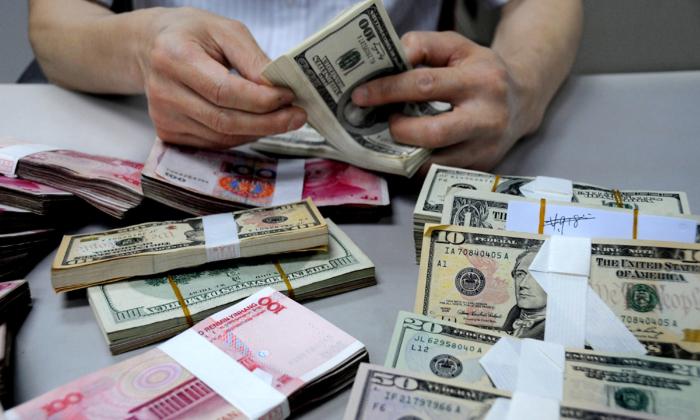The Russia-Ukraine war has brought significant constraints to the global energy supply as many countries have long depended on Russian exports of coal, oil, and gas.
On April 26, China’s Ministry of Finance announced it would remove import tariffs for all types of coal, starting from May 1 to March 31, 2023. Analysts believe that this policy change may largely benefit Russia as the European Union and Japan have recently moved to ban coal imports from the country.
The current import tariffs range from 3 percent to 6 percent, depending on coal type. For anthracite and coking coal, primarily used in steelmaking, tariffs will be cut to zero from the current 3 percent. The rates for various types of coal will be cut down to zero from the current 5 percent to 6 percent, the ministry said in a statement.
Chinese coal mines have accelerated production due to the soaring global energy prices following the Russia-Ukraine conflict. China’s major coal-producing provinces and regions have expanded their production capacity to increase supply, according to its National Statistics Bureau.
In 2021, China imported 323.33 million tons of coal, about 8 percent of its total coal consumption. However, its coal imports are down 24.2 percent through the end of March this year as global prices have soared, the bureau said.
In April, the United States, the EU, Japan, and others have moved to ban Russian coal, further exacerbating the tight supply in the global coal market.
Immediately following the new EU measures, the United States and Japan, among others, also announced bans on Russian coal. As finding alternative coal sources has become a top priority, countries worldwide have rushed to purchase the material.
China’s Strategy to Cope With Surging Coal Prices
On April 18, China’s National Development and Reform Commission warned that “it would be illegal to drive up prices in the coal sector,” emphasizing the need to ensure price stability in the domestic coal market and stable output of coal-fired power.A week later, Beijing announced cutting coal import tariffs to zero.
A macroeconomics researcher at China Economic Information Network, Tian Shuo, told Chinese state-run media Sina News that the zero-tariff policy would ensure that China’s energy supply remains stable amid the historic high coal prices.
The top sources for China’s coal imports in 2021 included Indonesia, Russia, Mongolia, the United States, Canada, and South Africa.

Indonesia has since become China’s largest source of coal imports.
According to official customs data, China imported 8.5 million tons of coking coal in the first two months of this year, one-fifth of which came from the Australian coal previously stranded in Chinese ports. Among the 8.5 million coking coal imports, 26 percent came from the United States and 22 percent from Russia. Due to the pandemic, coking coal imports from Mongolia had decreased significantly, only accounting for about 13 percent.
Meanwhile, according to Sina News, Indonesia suspended its coal exports in January due to persistent rainfall, resulting in a 25 percent year-on-year reduction in China’s thermal coal imports in the first two months of this year.
Analysts: Russia Is Likely the Main Beneficiary
The report suggested that Russia is likely the main beneficiary of the Chinese tariff cuts.Following Europe’s announcement of a coal ban on Russia, Kremlin spokesperson Dmitry Peskov said on April 29 that coal was in high demand and that Russian coal earmarked for Europe would be redirected to other markets if the EU refused it, Reuters reported. But Peskov did not mention a specific country for export.
China imported nearly 25 percent of Russia’s total coal exports; Germany, the Netherlands, Turkey, and Poland accounted for 24 percent; South Korea, Japan, and Taiwan accounted for 22 percent, according to EIA data.
In early February, China and Russia signed a yearslong deal, a $20 billion contract for China to import 100 million tons of coal from Russia.
Bai Ming, a deputy director at the Chinese Academy of International Trade and Economic Cooperation, told the Global Times on April 13 that the growth is in line with the recent trend of China importing more energy products from Russia to form multiple energy import channels.
New China-Russia Railway to Be Open for Energy Trade
China had been importing Russian energy products from its eastern ports via the Sea of Japan and the Korean Strait.However, amid Western sanctions on Russia, international shipping companies have avoided shipping Russian energy products, resulting in Chinese coal importers struggling to find cargo ships willing to transport Russian coal. And only a small portion of Russian coal was transported via railway.
The new 4.5 mile-long bridge is intended to expand the bilateral trade and economic cooperation between China and Russia “against a backdrop of growing global challenges,” the report said, adding that Russia plans to utilize it for exporting iron ore, coal, minerals, fertilizer, and wood products to China.





